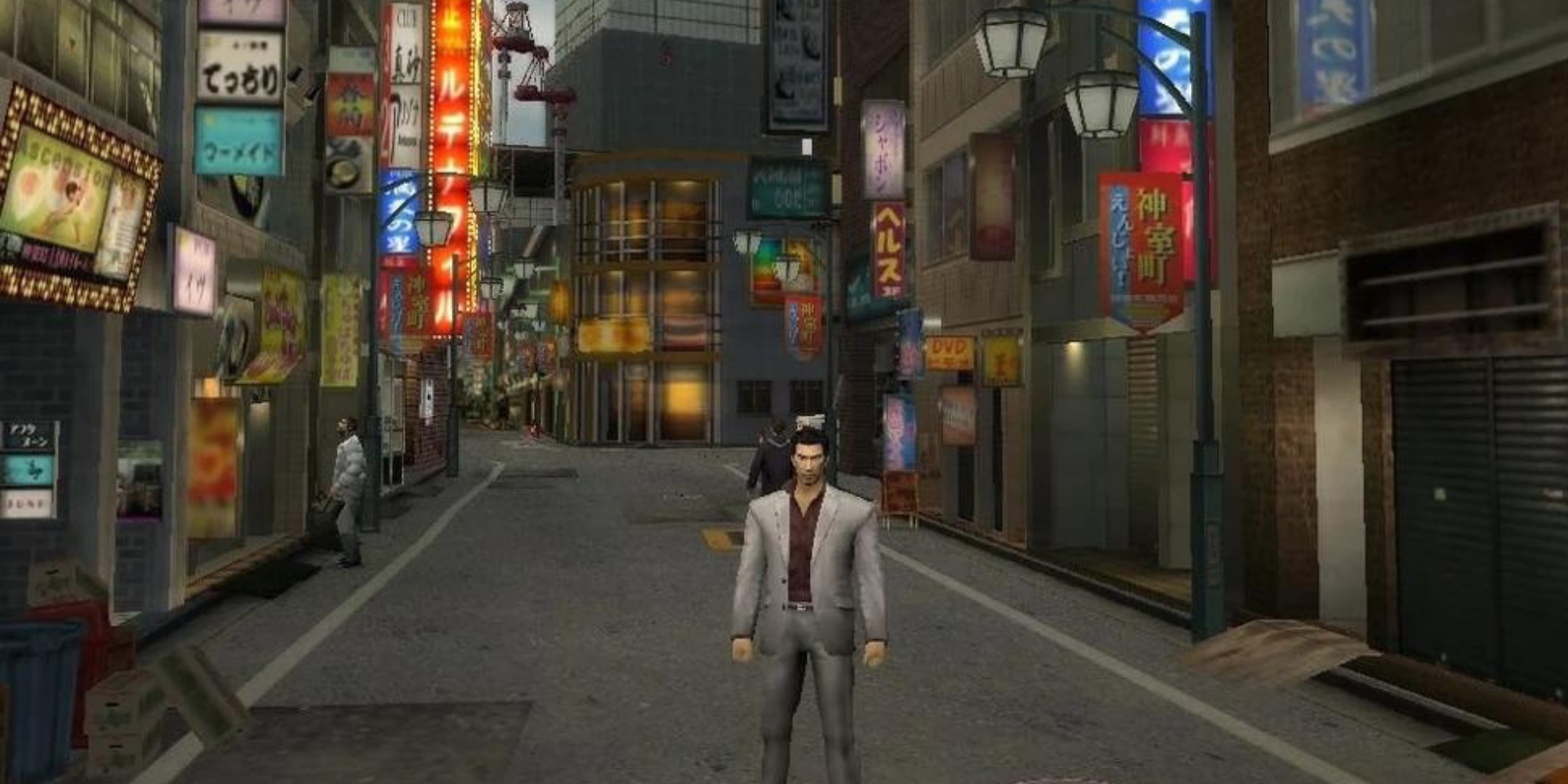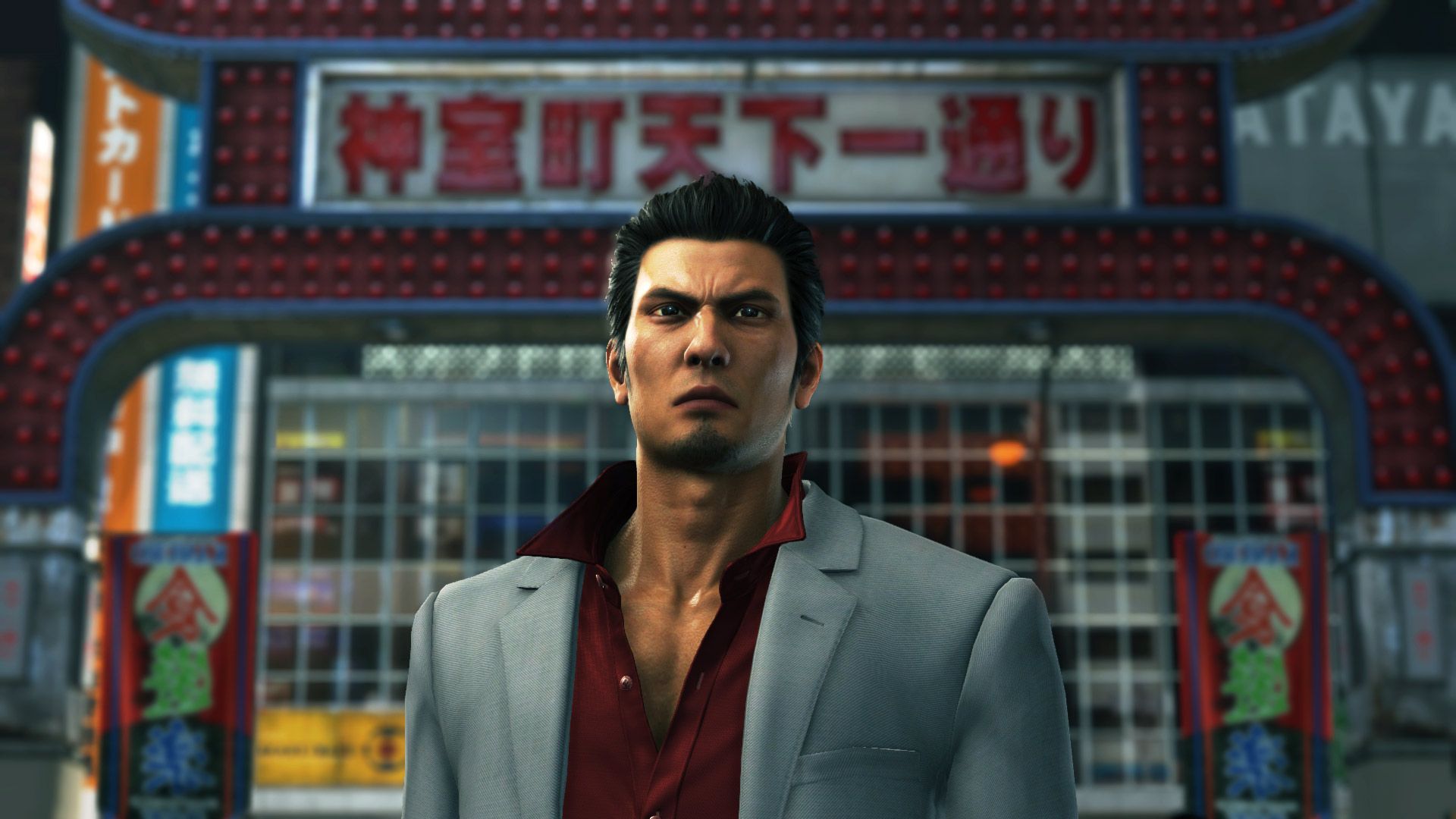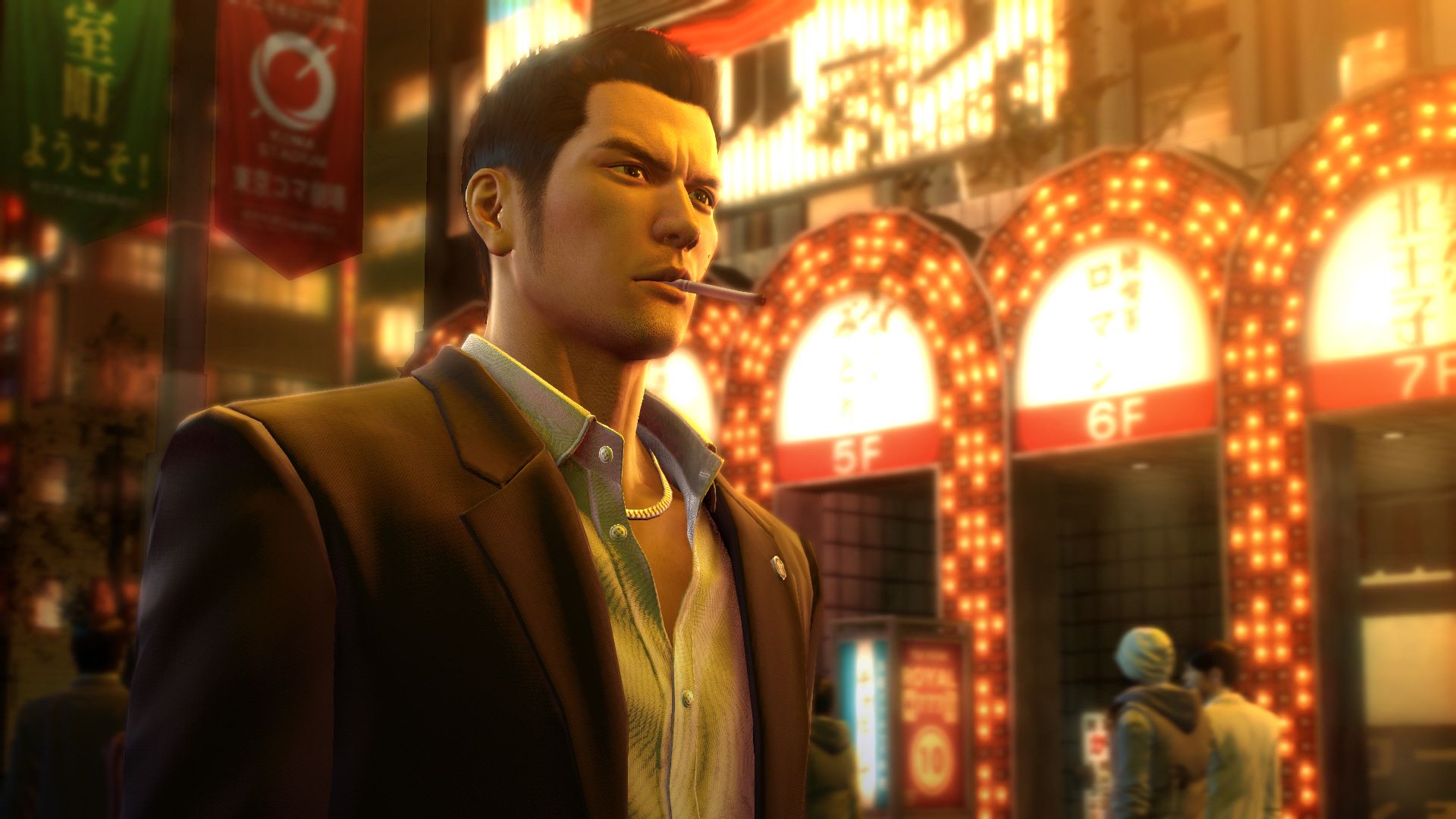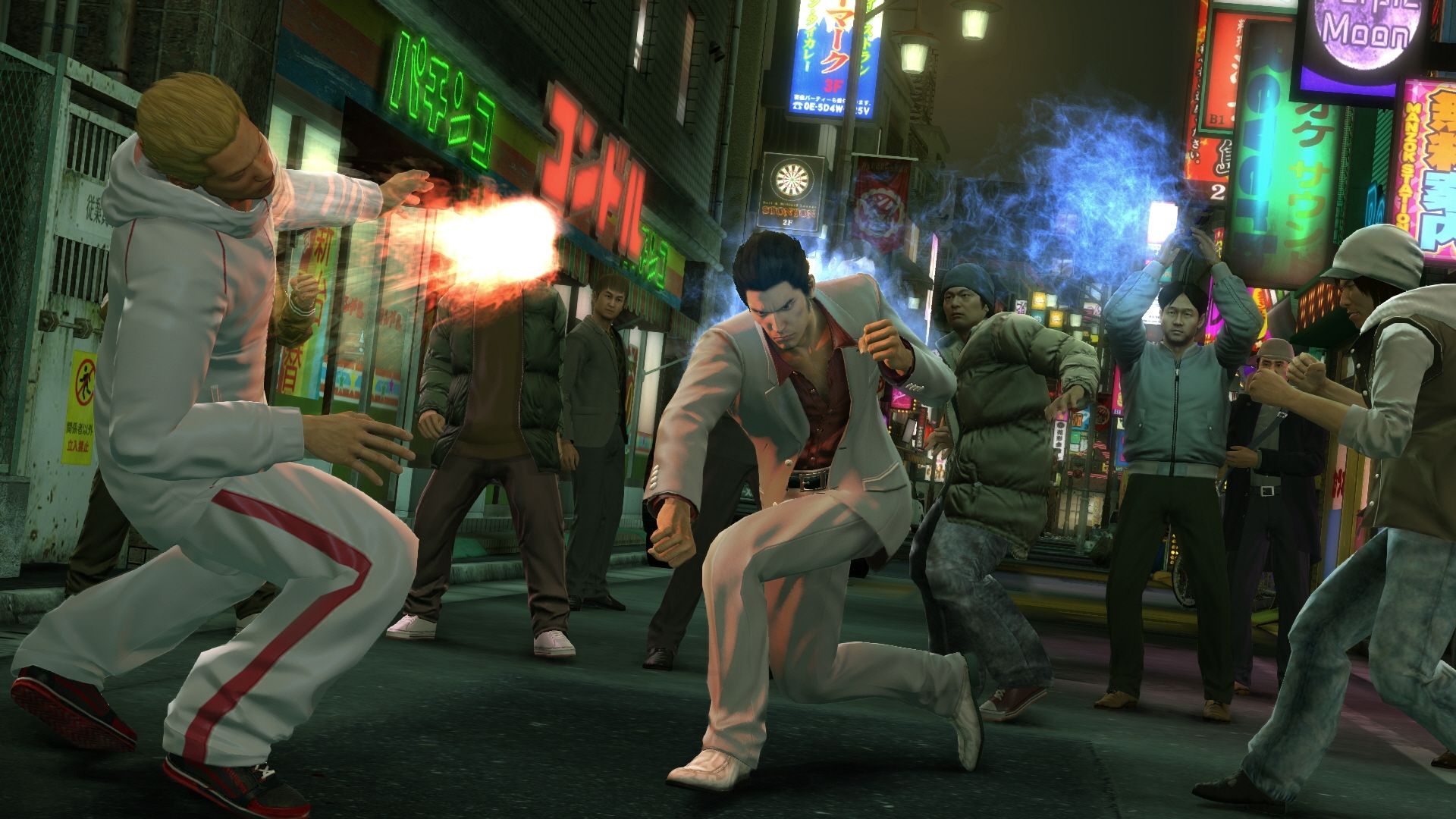Kamurocho is like a home away from home. For nearly two decades now, it has acted as the home for Like A Dragon protagonist Kazuma Kiryu and a regular stomping ground for myriad other characters in the series. But instead of leaving it behind for grander locales, every new game builds upon it in distinct and interesting ways.
If you aren’t familiar with Kamurocho, it is the fictionalised equivalent of Kabukicho, a section of Tokyo’s Red Light District featuring the very same iconic red arches, and plentiful bars and clubs where locals and tourists alike are getting their groove on. I’ve been through it many times in the past myself, and it might be the only part of this sprawling city I’d dare describe as seedy. But even then, it feels unusually safe and welcoming, a spectacle of flashing lights and neverending bustle where you almost need to dip down a dark alley to take a break.
So, to celebrate Like a Dragon Week, I want to look back on how Kamurocho has grown with each new game, and how the red-light district has not only come to represent the themes of this beloved franchise, but also the people who live within it.
The More Things Change, The More Things Stay The Same
Like a Dragon might be an eccentric crime melodrama about fighting baddies and belting out karaoke between rounds of Space Harrier at Club Sega, but it remains grounded in its world design. Despite switching engines and incorporating new districts throughout its long history, the layout of Kamurocho has remained relatively unchanged.
Even now, I can still start at the red arches and effortlessly find my way around town, dipping into local businesses for goods or chain restaurants for a lovely beef bowl. The signage and occupants might change over the years, but the beating heart of Kamurocho remains the same.
Across three generations of consoles, the developers have made a conscious effort not to turn its signature location into an exaggerated farce,
even when filling it with zombies in Dead Souls
or having literal armies of Yakuza walking down its streets before doing battle in bouts of gang warfare so deadly they’d make international headlines.
I know where all its key locations are, and with each new game, I will ignore the map entirely as I venture to familiar haunts in search of major differences and nostalgic hallmarks, knowing that the people who helped piece together this virtual rendition have as much reverence for the real thing as I do.
But the lack of alteration in its layout and key locations makes narrative adjustments all the more poignant, and how this tiny part of a massive city has come to mean so much to Kiryu and those he holds dear. We’ve seen so much take place in Kamurocho over the past three decades, from Kiryu donning his signature suit for the first time to Majima driving a truck into the heart of Shangri-La.
While it was little more than a cultural oddity in the first game, we can now walk its streets and attach memories to specific places and people, as if we’re flicking through a virtual photo album of a place that continues to go on without us.
How Has Kamurocho Changed Over The Years?
Like a Dragon has never been entirely confined to Kamurocho, with the games visiting major cities like Osaka and Yokohama and venturing overseas to Hawaii in Infinite Wealth. Each one of these new additions has been just as faithful, to the point where you can go up to specific monuments and shops in reality and feel like they’ve been pulled straight into the game.
The series has long been a realistic cultural tourist attraction, so whenever something is changed, it’s all the more noticeable and exciting. We’re used to blockbuster games giving us sprawling open worlds to explore with each new entry, but here, I am excited about a new arcade game to play or restaurant to visit. I’m so attached to Kamurocho that it does matter.
Yakuza 0 took place prior to the construction of the Millenium Tower and Kamurocho Hills, a monument to capitalism that would rule over the narrative of multiple games. Yakuza 1, 2, 3, and 4 would build upon a Kamurocho with gradual updates to the existing layout alongside bespoke locations and establishments.
Yet it wasn’t until Yakuza 6: The Song Of Life that an engine reset would cause the district to be entirely reshaped, to the point that there wasn’t enough time during development to entirely recreate it, so a section was then sealed off and given light narrative justification, so it didn’t seem too out of place.
I’ll never tire of the changing face of Kamurocho, since it assumes familiarity and trusts us to seek out any and all the differences found within each game. Sometimes, there aren’t any at all, and while some point to this as lazy asset reuse, to me, it only further solidifies how it has become a character of its own.
But will there ever be a moment in time to leave this old haunt behind? I’ve asked myself that question for years, and thought it would finally come to pass with the departure of Kiryu. He’s fundamentally attached to Kamurocho as the place that helped raise and define him, helping to shape his moral ideals and standing as a human being.
Kiryu has seen the very worst that people are capable of, but instead of surrendering to that darkness, he saw it as a chance to spread light everywhere he goes, even if it comes in the form of righteous violence. You can’t have one without the other, at least not without losing much of the intended impact.
I won’t be ready when that time comes, but I’ll accept it. Even if one day it ceases to be a part of this franchise, it will always act as an immovable foundation. A recreation of a real place which has been reshaped into a sigil of hope amid the grime. It’s one of the medium’s most accomplished locales, because it simultaneously draws from our own world while seeking to build upon it in ways that only video games can.

Like a Dragon Week
Like a Dragon Week is TheGamer’s celebration of all things Yakuza/Like a Dragon, with features, interviews, and opinions on Ryu Ga Gotoku Studio’s massively popular series of action-adventue brawlers.
未经允许不得转载:大白鲨游戏网 » 会有时间离开Kamurocho吗?







 一个无竞争的缓存
一个无竞争的缓存 和平精英巡查员的衣服怎么获得?巡查员衣服获取方法介绍
和平精英巡查员的衣服怎么获得?巡查员衣服获取方法介绍 原神久岐忍角色等级突破材料一览
原神久岐忍角色等级突破材料一览 《王者荣耀》上官婉儿怎么飞天 三个基本连招口诀推荐
《王者荣耀》上官婉儿怎么飞天 三个基本连招口诀推荐 抖音创作服务平台在哪里打开 创作服务平台功能介绍
抖音创作服务平台在哪里打开 创作服务平台功能介绍
